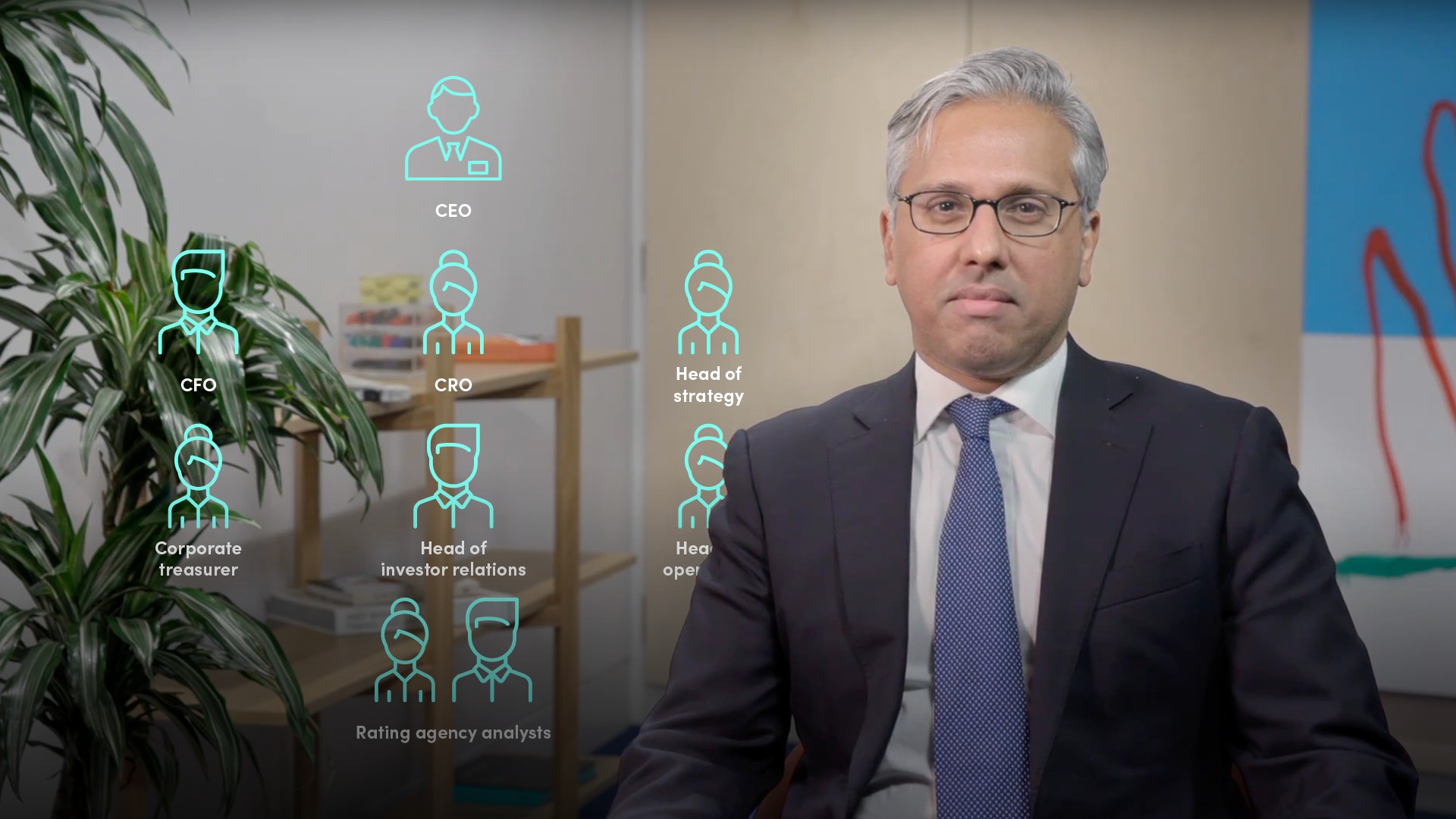
Attaining a Corporate Credit Rating II

Gurdip Dhami
25 years: Treasury & ratings
In this second video on the process to obtaining a new credit rating, Gurdip provides the last 4 steps and then the actions undertaken to manage this new rating.
In this second video on the process to obtaining a new credit rating, Gurdip provides the last 4 steps and then the actions undertaken to manage this new rating.
Subscribe to watch
Access this and all of the content on our platform by signing up for a 7-day free trial.

Attaining a Corporate Credit Rating II
13 mins 35 secs
Key learning objectives:
Identify and explain the different actions taken in steps 4-7
Outline the actions that can help to manage the rating after the rating has been received
Overview:
This concludes steps 4-7 of obtaining a new credit rating, focusing mainly on the interaction with the agencies. Once the rating has been received, the company should set up a process to manage the rating.
Subscribe to watch
Access this and all of the content on our platform by signing up for a 7-day free trial.
What is Step 4?
Appoint the agencies - After carrying out the desktop modelling and then meeting with its prospective rating agencies, a company will be in a good position to make an informed decision about whether to proceed without a rating and which agency or agencies to appoint.What criteria are used in choosing the rating agency?
- The rating estimate (current and projected) under each agency criteria
- Key rating drivers
- The potential rating triggers
- Rating levels achieved by peer group companies
- Rating fees
- Estimated timeline from each agency to provide the rating (do they have capacity?)
- Quality of the rating agency analysts
- Agency reputation amongst investors
- Transparency of rating methodology
- Terms and conditions of engagement (including confidentiality)
- Anticipated criteria changes in the short to medium term
What is an engagement letter?
The rating exercise will commence once both parties have signed a rating agency engagement letter, which includes details about the rating fees, confidentiality policies, and how the rating can be withdrawn. Once the contract has been signed, the company will need to provide information to the agency and prepare for a meeting with the agency analysts. The agency will provide the company with a list of information that it requires, along with an agenda for the meeting.What is Step 5?
Prepare the ratings pack - Using the agenda provided by the rating agency, the company should produce a Powerpoint presentation for the rating agency which details the business and financial profile of the company, this is referred to as a ratings pack. The company should tailor the information to the rating agency, for example by using the rating agency criteria.What materials should be presented to the agency?
- Company strategy
- Corporate governance
- Corporate structure
- Risk management
- Business profile (products, customers, suppliers, geographies)
- Financial profile
- Funding profile
- Financial forecasts (including key ratios)
The Powerpoint presentation should be sent to the rating agency at least one week before the meeting so that the analysts can review the information and be prepared for the meeting.
What is Step 6?
Meet the Agencies:- At least a week before the rating meeting, all managers who will participate should rehearse their presentations as a group to ensure that the company is conveying its key messages to the rating agency in a consistent manner.
- The companies’ representatives at the meeting should be chosen so that they can answer all questions from agency analysts and present the company’s credit strengths.
- At least 2 analysts from the rating agency will attend. The company should ask for the bios of each analyst so that the attendees from the company know their backgrounds.
- The first time ratings last a full day, and during the presentation, the agency analysts will ask questions in order to get more detail or to clarify their understanding.
- At the end of the meeting, the analysts should be asked about the next steps in the process, for example, when the rating decision will be made.
What is Step 7?
The rating decision:- The rating agency analysts will produce their ratings analysis which is then sent to the rating committee at the agency. It is not shared with the company.
- After about 4 weeks, the company will receive the rating level and rationale from the agency, which it can either accept or reject. The company is under no obligation to get the rating published.
- The company will have the option to appeal the rating decision, subject to the agency’s rules on the appeals process. A rating appeal is normally only allowed if the company provides significant new information to the agency, or believes that the agency has fundamentally misunderstood the company.
- If the company accepts the rating, the agency will price a draft press release to the company to review before it is published by the agency on its website. It is usually around 2 pages long and shows the rating, the rating rationale, rating drivers and rating triggers.
- The company should carefully review the draft press release report to check for accuracy and ensure there is no confidential information.
- The agency will also publish a full ratings report on the company a few weeks after the agency has issued the press release. The full rating report provides a lot more detail, and is around 7-10 pages long.
- Prior to publication, the agency sends the draft report to the company to review.
Before publishing the rating, what should the company carefully review?
- The rating rationale which sets out the rating
- The outlook
- How the agency has applied its criteria
- The key rating drivers
- The rating triggers
What are Rating Triggers?
Rating triggers - Show the circumstances under which a rating can be upgraded or downgraded. For example there may be a trigger which states that the rating will be downgraded if the leverage is above a certain level. The company should carefully examine each trigger and be satisfied that it can maintain the rating given its projections.What specific ongoing actions can help to manage the rating?
- Management should be fully familiar with the rating triggers set out in the agency rating report
- A rating model should be constructed and maintained using the agency criteria and the latest rating report
- The rating reports of peer group companies should be reviewed
- Agency sector reports that come out from time to time should be reviewed
- Keep up to date on the latest agency research and views on ‘hot topics’ that may impact the rating of your company
- Attend rating agency events in order to gain further knowledge of the agency methodologies and policies
- Use the rating agency criteria to tailor the information for the agency
Subscribe to watch
Access this and all of the content on our platform by signing up for a 7-day free trial.

Gurdip Dhami
There are no available Videos from "Gurdip Dhami"



























